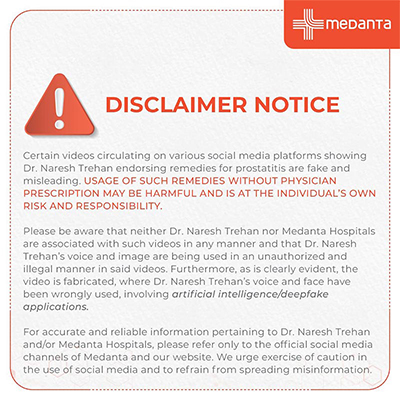Types Of Diabetes: Know the Risks and Differences

Did you know that more than 830 million people have Diabetes worldwide? Diabetes is one of the most common chronic diseases globally. But there are several different types of diabetes, each with its causes, symptoms, and treatments. While most people are aware of Type 1 and Type 2 diabetes, there are also lesser-known types such as gestational diabetes, and even the more unusual ones such as Type 3c and Type 7.
In this guide, we’ll break down the different types of diabetes, compare their severity, discuss whether Type 2 diabetes can be cured, and much more!
What Are the Different Types of Diabetes?
Diabetes isn’t a one-size-fits-all condition. While all types result in high blood sugar levels, the underlying causes vary significantly.
1. Type 1 Diabetes (Autoimmune Diabetes)
Type 1 diabetes is an autoimmune condition where the immune system mistakenly attacks the beta cells of the pancreas that secrete insulin. Consequently, individuals with Type 1 diabetes secrete little or no insulin and have to receive insulin injections for the rest of their lives.
Causes: Genetic predisposition and environmental factors (e.g., viral infections) are thought to be responsible.
Symptoms: Excessive thirst, urination, loss of weight, severe tiredness, and blurred vision.
Treatment: Needs life-long insulin therapy, blood glucose monitoring, and strict diet control.
Who is it found in? Most often diagnosed in children and young adults, but can be detected at any age.
Since the body is unable to make insulin at all, Type 1 diabetes must be controlled at all times. If left untreated, it can result in diabetic ketoacidosis (DKA), a condition of emergency due to an excess of ketones in the blood. [1]
2. Type 2 Diabetes (Insulin Resistance Diabetes)
Type 2 diabetes is the most prevalent type and occurs in approximately 90% of all diabetes cases in the world. [2] In contrast to Type 1 diabetes, the pancreas does make insulin, but the body's cells become resistant to insulin, resulting in elevated blood sugars.
Causes: Genetic tendency combined with lifestyle factors such as poor diet, overweight, and physical inactivity.
Symptoms: Fatigue, hunger, frequent infections, delayed healing of wounds, pins-and-needles sensation in fingers and toes.
Treatment: Lifestyle modification (healthy diet, exercise), medication (e.g., metformin), and, in some instances, insulin therapy.
Who is affected? Heretofore known to affect people over the age of 40, though now rising at a more rapid rate in young people and children too.
Type 2 diabetes, if diagnosed when it's still time, can be reversed or can be driven into remission through weight reduction, dietary change, and physical exercise. [3]
3. Gestational Diabetes (Pregnancy-Related Diabetes)
Gestational diabetes arises during pregnancy because hormonal changes during this period make the body insulin-resistant. While it usually goes away after delivery, it increases the chances of developing Type 2 diabetes later on. [4]
Causes: Pregnancy hormones interfere with insulin, leading to elevated blood glucose levels.
Symptoms: Typically asymptomatic, though some women may have excessive thirst, more frequent urination, and fatigue.
Treatment: Regulated by diet, exercise, and occasionally insulin or medication.
Who is affected? Pregnant women, particularly those with a history of diabetes, obesity, or previous gestational diabetes.
Women with gestational diabetes can regulate it through blood sugar testing that must be done regularly. Women may require insulin therapy in more extreme cases. Babies born to women with inadequately regulated gestational diabetes can be heavier than average at birth and grow up to become obese and diabetic. [5]
4. Type 3c Diabetes (Pancreatic Diabetes)
Type 3c diabetes results as a result of pancreatic damage caused by pancreatitis, pancreatic cancer, or surgery. Type 3c diabetes is unique compared to Type 1 and Type 2 diabetes in that it is due to both a lack of insulin and faulty digestion caused by reduced enzyme production.
Causes: Pancreatitis, pancreatic tumors, cystic fibrosis, or pancreatectomy surgery.
Symptoms: Type 1 and Type 2, with the additional complication of gastrointestinal distress from enzyme insufficiency.
Treatment: Both insulin therapy and enzyme replacement therapy are required.
Who is affected? Individuals who have pancreatic diseases or a history of pancreatic surgery.
Type 3c diabetes is often misdiagnosed as Type 2 and treated inadequately. In contrast to Type 2, it cannot be reversed by mere lifestyle modification alone.
5. Monogenic Diabetes (MODY & Neonatal Diabetes)
Monogenic diabetes is a rare genetic type of diabetes resulting from the mutation of one gene. It consists of two general subtypes:
MODY (Maturity-Onset Diabetes of the Young): Conventionally diagnosed in young adults or young people, MODY is often misdiagnosed with Type 2 or Type 1 diabetes. Certain types of MODY can be treated by tablets rather than insulin.
Neonatal Diabetes: Occurs in newborns and may be temporary or permanent, depending on the gene mutation.
Causes: Inherited genetic mutations that impact insulin production.
Symptoms: Differ based on genetic mutation, but tend to be less severe than Type 1 diabetes.
Treatment: Some receive oral medication, while others need insulin therapy.
Who is affected? Individuals with a history of diabetes prior to age 25.
Genetic testing is required for correct diagnosis and treatment.
6. Secondary Diabetes
Secondary diabetes results when another disease or medication leads to high blood glucose levels. Unlike Type 2 and Type 1 diabetes, secondary diabetes results from another disease.
Causes: Diseases such as Cushing's syndrome, acromegaly, or long-term steroid treatment.
Symptoms: Similar to Type 2 diabetes but frequently with evidence of the underlying illness.
Treatment: Control of the basic cause as well as control of blood glucose.
Who is affected? Individuals with endocrine disorders, chronic disease, or those on chronic steroid therapy.
In other situations, secondary diabetes can be reversed after the underlying cause is treated.
Is There a Type 7 Diabetes?
There is no officially recognised Type 7 diabetes in the medical literature. The term is used informally to describe some metabolic disturbances that resemble diabetes. It can be referred to by some researchers as severe syndromes of insulin resistance or unclassified conditions. [6]
Which Is More Serious: Type 1 or Type 2 Diabetes?
Both Type 1 and Type 2 diabetes, if left untreated, have severe complications. But both do so through different mechanisms of short- and long-term complications.
Type 1 Diabetes: In type 1 Diabetes, the body makes no insulin at all; it has to stay on insulin therapy all the time. Without it, blood glucose becomes very high and results in diabetic ketoacidosis (DKA), an acute emergency.
Type 2 Diabetes: Type 2 diabetes has the potential to trigger fatal complications such as heart disease, renal insufficiency, and neuropathy.
Both are dangerous in general, but Type 1 is more immediately deadly since it requires outside insulin.
Can Type 2 Diabetes Be Cured?
Type 2 diabetes cannot be completely cured, but it can be driven into remission with drastic lifestyle overhauls.
Weight Loss: Losing 5-10% of body weight can increase insulin sensitivity.
Diet: Low-carbohydrate, high-fiber diets regulate blood sugar.
Exercise: Exercise on a regular basis enhances insulin function.
Bariatric Surgery: Weight-loss surgery can lead to long-term remission in certain cases.
Type 2 diabetes can be reversed in certain instances, but it requires ongoing effort not to fall back.
Final Thoughts
Diabetes isn't one condition—it's a range of illnesses with various causes, risk factors, and courses of treatment. Whether Type 1, Type 2, or one of the lesser-known ones like Type 3c, knowledge of the different types can help in treating the disease appropriately. Some types of diabetes are preventable and even reversible. However, others need to be treated lifelong.
If you suspect you have diabetes or are at risk, visit your nearest super-specialty hospital as soon as possible!
FAQs
1. Can diabetes go away on its own?
No. Type 1 diabetes is lifelong, and Type 2 diabetes requires active management. Some cases of gestational diabetes resolve after pregnancy, but they increase the risk of future diabetes.
2. How do I know if I have diabetes?
Common symptoms include excessive thirst, frequent urination, fatigue, unexplained weight loss, and slow wound healing. A simple blood test measuring fasting blood sugar or HbA1c levels can confirm the diagnosis.
3. Is diabetes hereditary?
Yes, genetics play a role, but lifestyle factors also contribute. Type 1 diabetes has a stronger genetic link, while Type 2 is influenced more by environment and lifestyle.
4. Can you live a normal life with diabetes?
Absolutely! With proper management, people with diabetes can lead healthy, active lives. Monitoring blood sugar, eating well, staying active, and following prescribed treatments are key.
5. Does stress affect diabetes?
Yes, stress triggers hormone changes that can spike blood sugar levels. Managing stress through meditation, exercise, and good sleep habits can help maintain better glucose control.
Citations
Goyal, R., Jialal, I., & Singhal, M. (2023, June 23). Type 2 diabetes. National Center for Biotechnology Information; StatPearls Publishing. https://www.ncbi.nlm.nih.gov/books/NBK513253/
Herring, S. J., & Oken, E. (2010). Obesity and Diabetes in Mothers and Their Children: Can We Stop the Intergenerational Cycle? Current Diabetes Reports, 11(1), 20–27. https://doi.org/10.1007/s11892-010-0156-9
Lizzo, J. M., Goyal, A., & Gupta, V. (2023, July 10). Adult diabetic ketoacidosis. PubMed; StatPearls Publishing. https://www.ncbi.nlm.nih.gov/books/NBK560723/
Mancera-Rincón, P., Luna-España, M. C., Rincon, O., Guzmán, I., & Alvarez, M. (2024). Maturity-onset Diabetes of the Young Type 7 (MODY7) and the Krüppellike Factor 11 Mutation (KLF11). A Review. Current Diabetes Reviews, 20(1), e210323214817. https://doi.org/10.2174/1573399819666230321114456
Noctor, E. (2015). Type 2 diabetes after gestational diabetes: The influence of changing diagnostic criteria. World Journal of Diabetes, 6(2), 234. https://doi.org/10.4239/wjd.v6.i2.234
Sherwood, A. (2018, December 24). Can You Reverse Type 2 Diabetes? WebMD; WebMD. https://www.webmd.com/diabetes/can-you-reverse-type-2-diabetes






